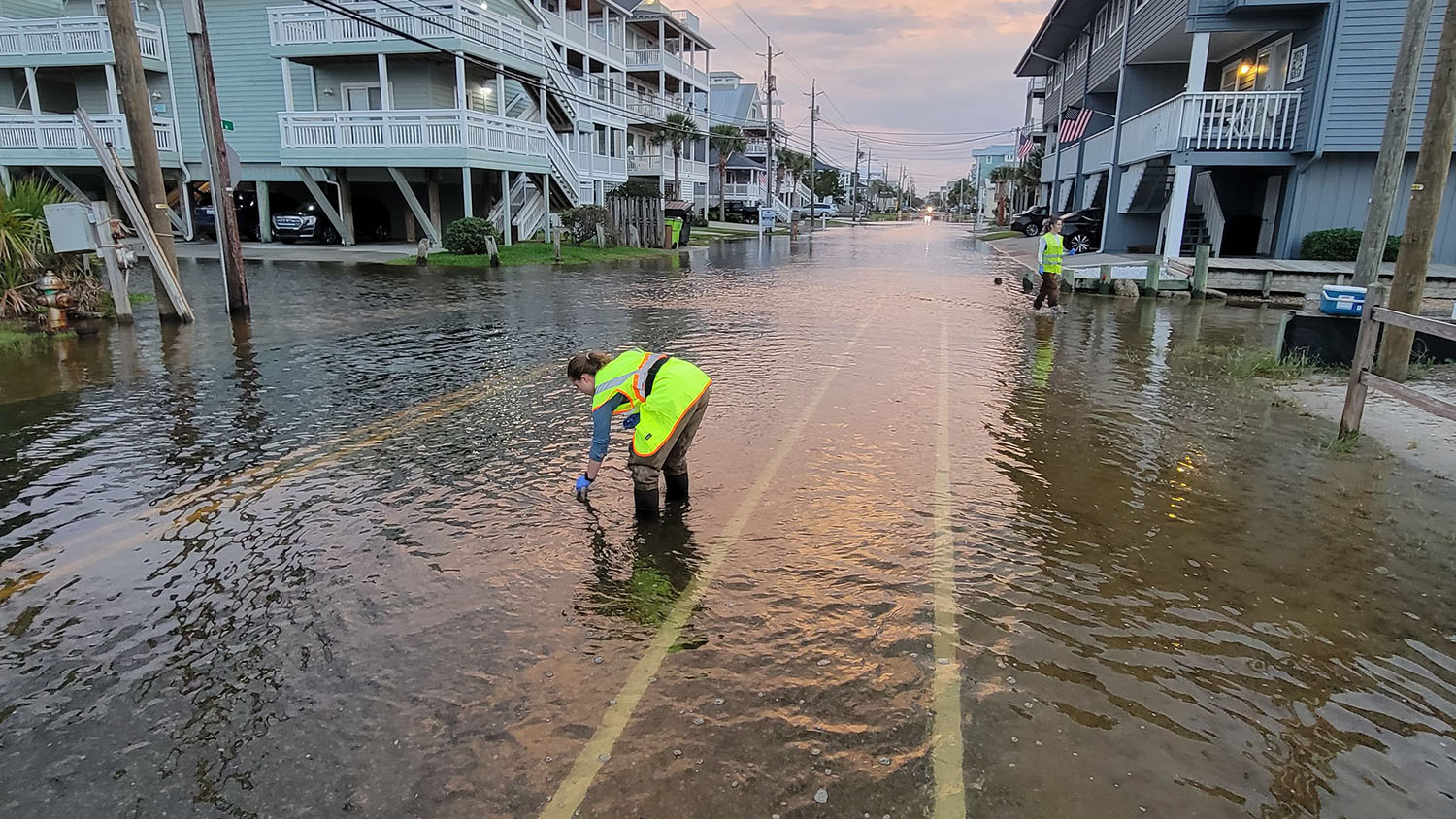Cretaceous Cold Case No. 2, Part 2: It’s a Trap?
This is part two of the second case in a series called “Cretaceous Cold Cases” in which the science of taphonomy, or prehistoric forensics, is explained through fascinating cases from the files of Terry “Bucky” Gates, a research scientist with a joint appointment at NC State and the North Carolina Museum of Natural Sciences. Part 1 is here.
The 147-million-year-old Cleveland-Lloyd Dinosaur Quarry is truly a prehistoric cold case. Paleontologists believed that the evidence pointed to gluttony and miscalculation as the causes of death for 53 carnivorous dinosaurs.
I was not convinced. There were gaping holes in the evidence and the focus by previous investigators on the unusually high number of dead carnivores did not sit well with me.
With that in mind, I looked at the Cleveland-Lloyd Dinosaur Quarry in a different way. Instead of addressing the elephant in the room – how did so many carnivorous dinosaurs get buried in this location? – I stepped back and asked a broader, dinosaur-sized question.
“What could have led to the death and burial of more than 75 dinosaurs at this location?”
The new investigation was open.
My first step in the investigation was to make a list of all possible ways that dinosaurs could have ended up at the quarry. I thought through all the ways the animals could have died at the site, including scenarios such as volcanic eruption, drought, or predator trap, and also scenarios where the dinosaurs died elsewhere and were brought to the site, as in a large flood.
Then I had to find forensic evidence. Taphonomists don’t bring dust for paleo-forensic investigations. We make dust. The only way to find forensic data in the fossil record is to dig it up. During the course of our two-year excavations and hundreds of hours back at the museum, I collected data on the position and condition of every bone we found. This included the size of the bone, direction the bone was pointing in the ground, depth it was buried, and whether there was evidence of carnivorous tooth marks. I also tried to determine whether the bone had lain on the ground surface for years before being buried, and observed the edges of the bones to see if they had been scuffed or rounded.
Patching together the stories of each individual bone and the geologic sequence through the bone layer revealed the history of the entire fossil assemblage.
Finally, I was able to make a deduction! This is by far the most exciting part of taphonomy. In paleontology we rely on a simple axiom, “The present is the key to the past.” This means that the natural processes we see every day around us also happened in a very similar way during prehistoric times. So I compared modern-day evidence of floods, miring (a fancy way of saying “getting stuck in mud”), drought, and volcanic eruptions to what we saw preserved at the Cleveland-Lloyd Quarry and came to a cool, interesting new conclusion.
I believe that a pandemic drought caused the accumulation and death of around 75 dinosaurs in one spot during the Late Jurassic of central Utah.
Here is the scene: The start of the dry season, 147 million years ago, central Utah. Plants are scattered across the ground, but the only substantial forests are near the winding rivers, now waning in their flow. Across the floodplain, a watering hole is the only water source for some distance and a few plant-eating dinosaurs such as Camarasaurus and Stegosaurus lumber toward it. In modern droughts, some animals will find a watering hole and stay there until the dry season ends, which may have happened with these dinosaurs. Of course, the carnivores were not far behind.
When some of the herbivores succumbed to the prolonged drought the carnivores began feasting on their meat. The smell of rotting 100,000-pound dinosaurs is sure to attract its fair share of hungry diners. As such, more and more carnivores, especially Allosaurus fragilis, arrived at the party. The sight of so many prowling predators – and their many rows of shiny, sharp teeth – in one place may have scared away other herbivores, which would explain why so few are preserved at the site.
One thing we know is that carnivores like meat, even meat of their own species. I found evidence that some Allosaurus bones were eaten by predatory dinosaurs, and given how many Allosaurus were found at the site, my money is on the carnivores devouring one another once the herbivores expired.
Eventually, the drought ended and the floodwaters refilled the watering hole, covering dozens of dead dinosaurs.
A new question, new data and a new explanation. This cold case is closed…for now.



